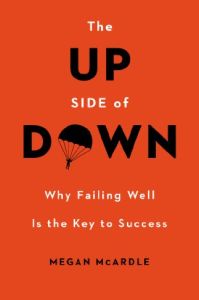Join getAbstract to access the summary!

Join getAbstract to access the summary!
Megan McArdle
The Up Side of Down
Why Failing Well Is the Key to Success
Viking, 2014
What's inside?
People and companies fear failure, but learning from it, or “failing well,” opens the door to innovation.
Recommendation
Business journalist Megan McArdle begins with a fundamental and insightful question: Given that failure is an inevitable part of life, what is the most productive way of thinking about it? Failures do not always happen because someone did something wrong. Sometimes, failures are the consequence of taking a big, creative risk. McArdle offers a wide-ranging tour through different types of failure and explains how best to respond to each kind. She touches on the demise of the old General Motors, the 2008 financial crisis, welfare reform, unemployment, the breakup of personal relationships, and much else in between. She’s at her best when she sticks with her overriding theme and most compelling claim – that the way people respond to failure is crucial to building the mind-set that promotes productive innovation. getAbstract recommends McArdle’s insights and examples to entrepreneurs, business owners and anyone promoting economic policies that foster innovation.
Summary
About the Author
Megan McArdle, a columnist for Bloomberg View, is a former staff member at The Economist and The Atlantic.

















Comment on this summary